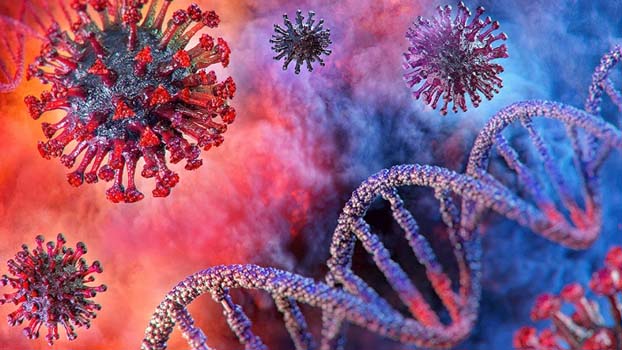COVID-19
Peak of infection likely in late May: Experts

Health experts predict the 3rd week of the current month to be the peak COVID-19 infection period while the scenario to remain static for subsequent several days and expected the number of cases to come down largely by the end of June, reports BSS.
“Our team forecasts the third week of May to be the peak time when COVID-19 cases may exceed 50,000,” said Professor Dr Shah Monir Hossain, a member of a government-formed health experts team to analyze the pandemic trend in Bangladesh.
Hossain, a former director general of health services (DGHS) and member of the eight-member committee, said according to their analysis the peak period would continue until first week of June ahead of showing a downward trend.
“A sharp fall (of Covid-19 cases) could be expected by the end of June,” he said explaining their analysis, based on mathematical methods and epidemiological formulas.
His comments came as the country witnessed spike in COVID-19 deaths and infection reports amid fears an expanded testing arrangement could draw a grimmer picture of the situation.
Incumbent DGHS director general Prof. Abul Kalam Azad echoed the committee forecast saying the country would have to wait until late June for an expected relief.
“We could expect the decline of coronavirus cases at the end of June by when spread of the virus would be under control . . . but we have to wait for some more time to get rid of the pandemic entirely,” Azad said.
The DGHS chief said the government set a target of testing 10,000 samples each day to detect COVID-19 cases while so far the highest 6260 samples were examined in a single day in 33 PCR labs across the country while works were underway to increase the number of the testing facilities.
“We are collecting samples from door to door . . . we will intensify the process engaging the non-government and private sector, we’ll intensify the process (of collecting samples) widening testing facilities for quick confirmation of the deadly disease,” Azad said.
He said BRAC by now set up four sample collection booths at Bangabandhu Sheikh Mujib Medical University (BSMMU), three at Shaheed Suhrawardy Medical College Hospital and one at Sheikh Fazilatunnessa Mujib Memorial KPJ Specialised Hospital in Gazipur.
Azad said another NGO, JKG Health Care, also installed identical booths in Dhaka city and Narayanganj to collect samples in coordination of DGHS and health workers and trained volunteers were asked even to collect samples from inside the abode of elderly or physically challenged people.
He said the government planned to set up required number of such booths across the country to expedite COVID-19 testing activities.
Asked what might have caused the COVID-19 spike after an apparent lull, Azad echoed several other health experts and attributed it to relaxed shutdown and people’s movement largely ignoring calls for cautions including social distancing.
He acknowledged the spike to be “alarming” the situation demanded “one more immediate projection to reach accurate measurement of the disease” while Hossain sought tougher government interventions to check spread of the disease.
“Bangladesh must follow three preventive measures — people must wear masks, wash hands and strictly maintain physical distance,” Hossain said.
IEDCR advisor Mustaq Hossain said although entire Bangladesh was at COVID-19 risk, infection rate in many parts of the country was still very low and “to halt spread of the virus, we have to identify coronavirus clusters and make them isolated.
“If we manage these clusters through implementing all preventive measures, spread of the disease will slow down gradually,” he said adding that the population density made it difficult task ensure physical distancing in urban areas exposing crowded city nighbourhoods to more vulnerability.
He suggested stricter enforcement steps for Dhaka city, Narayanganj, Gazipur and Savar as these areas appeared to be the worst COVID-19-hit localities.
“You can expect the relief in late July as forecasted, if these measures are implemented properly, Mustaque added.



